Last November, a former crematorium turned cultural hub in Berlin’s Wedding district hosted a three-day event centred around seven prototypes for survival as organic beings on this planet.
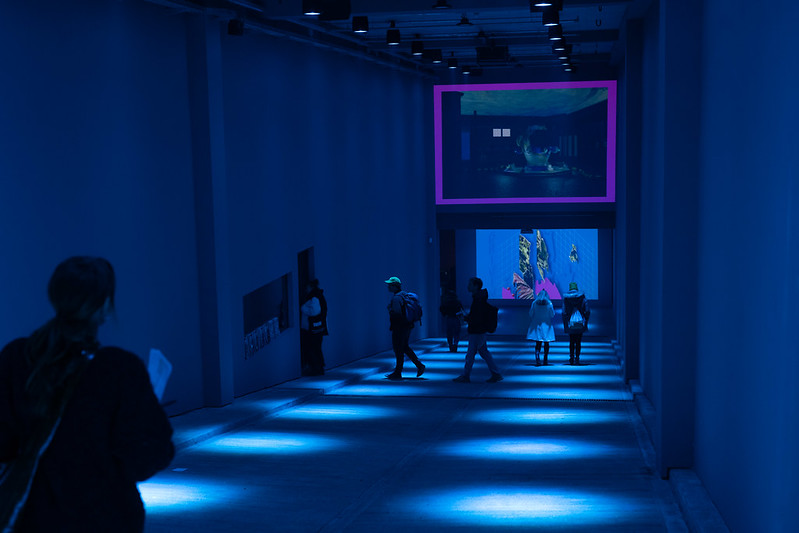
Driving the Human. Photo by Camille Blake
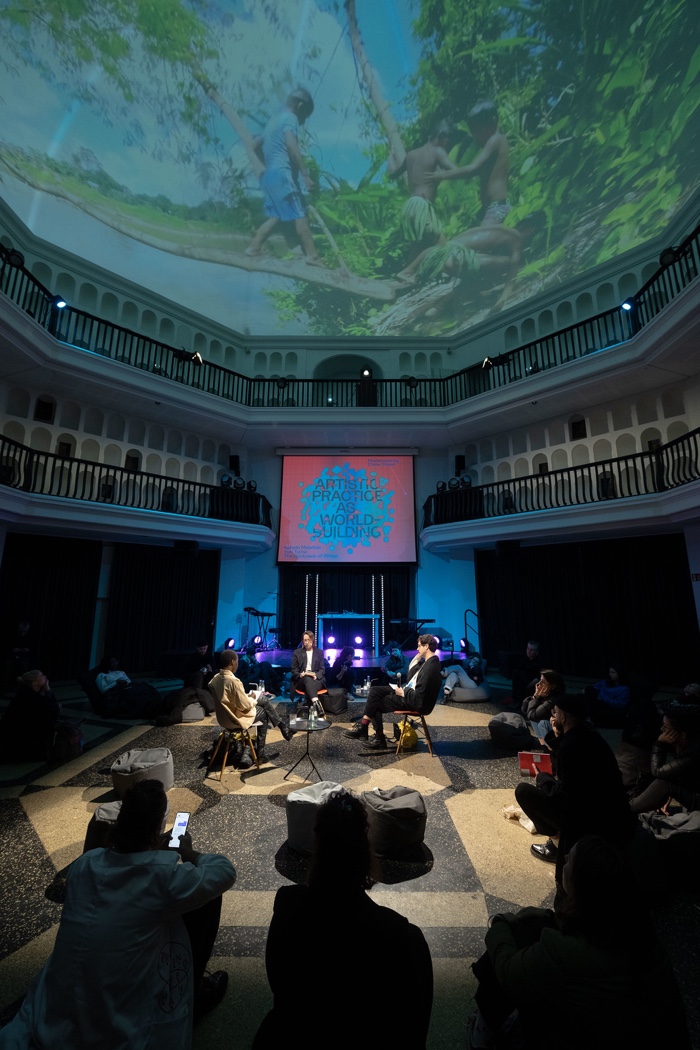
Driving the Human. Photo by Camille Blake
The Driving the Human prototypes are being developed over the course of a three-year duration process. I discovered them after they had gone through two waves of selection. 1,000 proposals responded to the call for submissions in 2020. Last year, 21 concepts were presented in Berlin. The final seven projects shown in November have emerged from regular discussions between artists, designers, scientists and engineers.
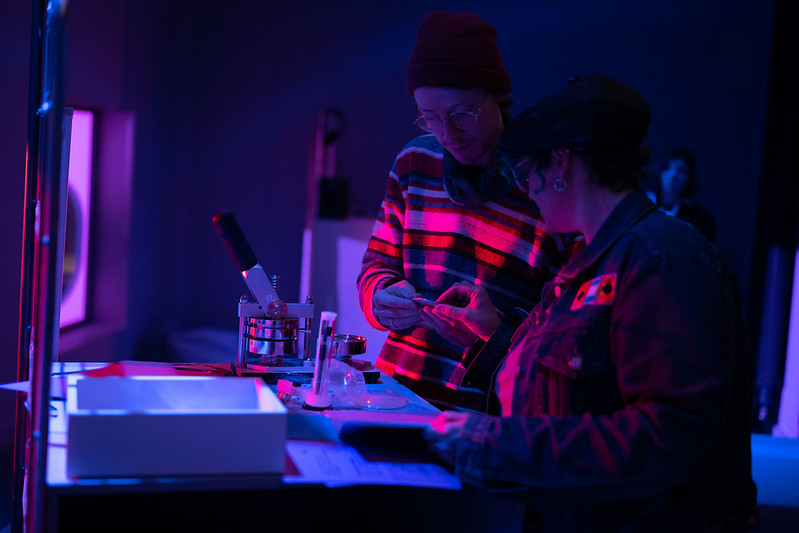
Driving the Human. Photo by Camille Blake
Focusing on prototypes rather than on finished products means questioning the “quick fix” design culture. Some designers tend to present ready-made technological objects and services as direct responses to deep-rooted, multi-faceted problems. As if technology and science could efficiently address social or environmental problems on their own. The methodology adopted by Driving the Human, on the other hand, leaves space for risk-taking, error-making and deeper connections with science institutions while opening up the development process to other disciplines and, as the festival demonstrated, to the public.
In a sense, Driving the Human‘s bold and responsible approach reflects the urgency society is facing. Wherever we look, it seems that the world is crumbling before our eyes: sea levels are rising, biodiversity is collapsing, antibiotic resistance and cyber warfare are looming, plastic invasion is growing, maniacs and megalomaniacs are presiding over the future of entire countries, etc. Very few people still believe that the answer to these challenges simply lies in a geoengineering proposal or a “greener” architectural project.
The second element that, in my view, made Driving the Human unusual was how easy the organisers made it for the public to engage with the work. You could simply have a look at the works or you could explore their ideas and genesis deeper through a program of workshops, music performances, debates and even guided tours with a microbiologist, an ornithologist, an architect, a philosopher and other experts who engage with different aspects of the prototypes and interpret them based on their own competences. A broader, more considerate and sensitive approach is crucial.
Here’s an overview of the seven prototypes that, each in their own way, address the disconnect between our deep concern for humanity’s survival and our current, reckless way of inhabiting the Earth.
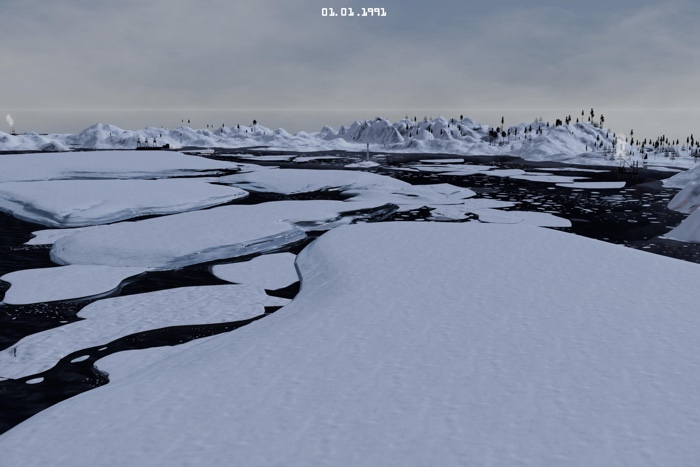
alternaA (Andra Pop-Jurj and Lena Geerts Danau), Monsters and Ghosts of the Far North, 2022
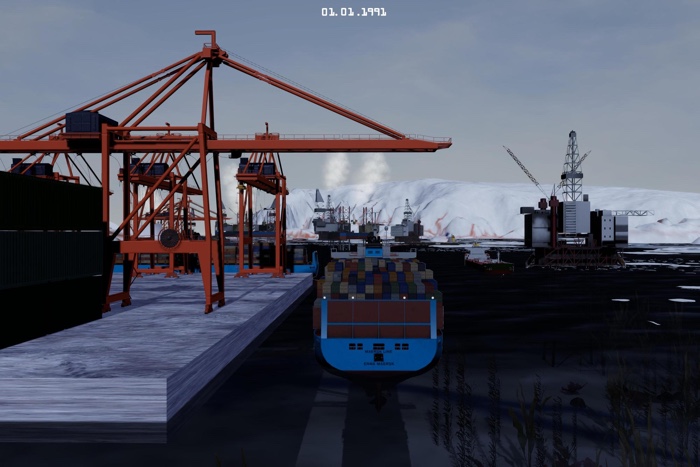
alternaA (Andra Pop-Jurj and Lena Geerts Danau), Monsters and Ghosts of the Far North, 2022
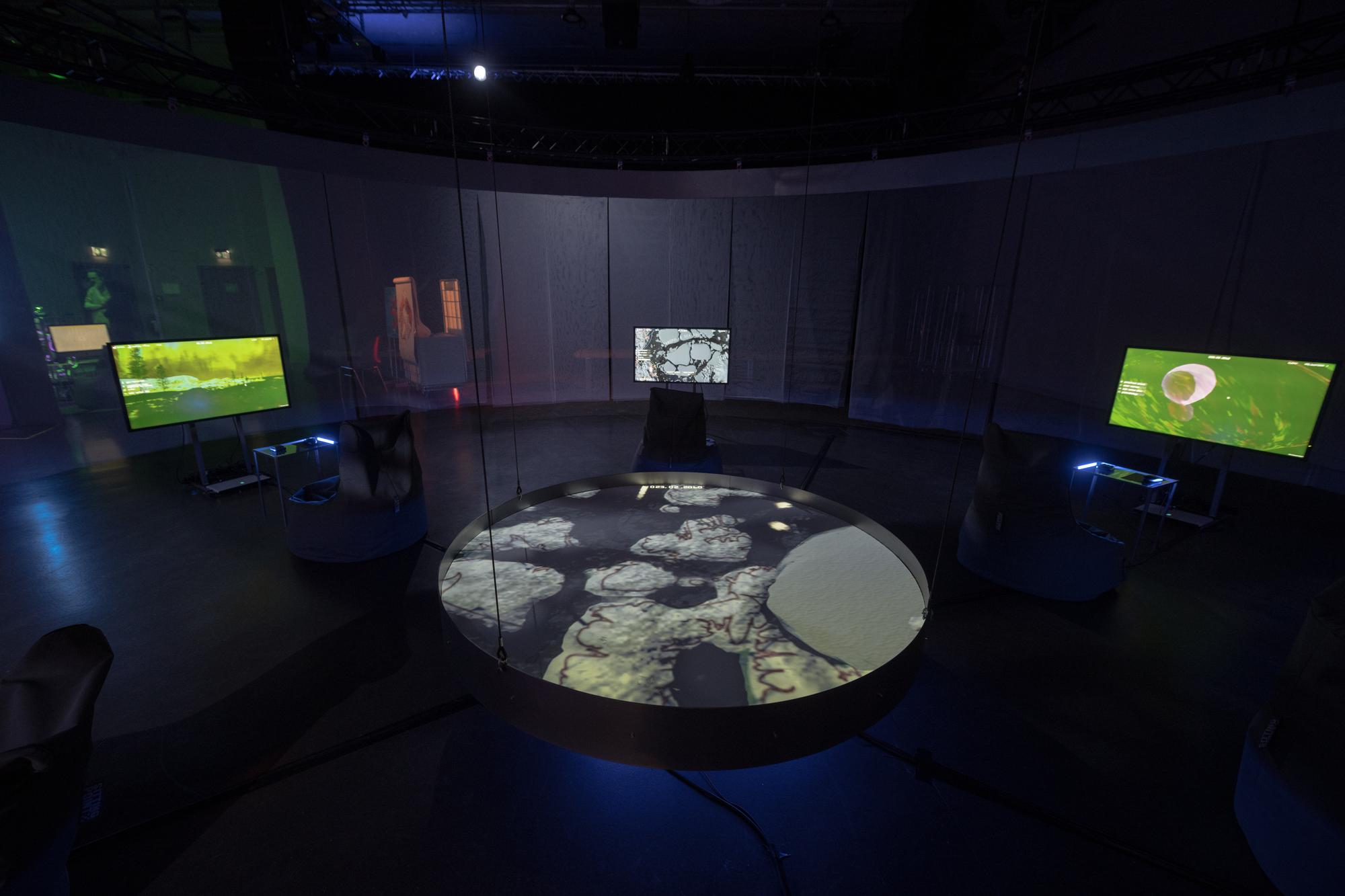
alternaA (Andra Pop-Jurj and Lena Geerts Danau), Monsters and Ghosts of the Far North, 2022. Driving the Human. Photo by Camille Blake

alternaA (Andra Pop-Jurj and Lena Geerts Danau), Monsters and Ghosts of the Far North, 2022. Driving the Human. Photo by Camille Blake
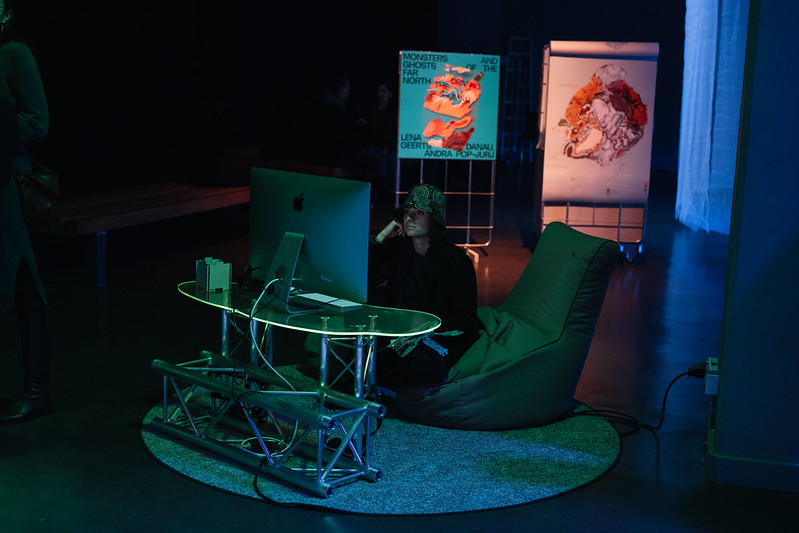
alternaA (Andra Pop-Jurj and Lena Geerts Danau), Monsters and Ghosts of the Far North, 2022. Driving the Human. Photo by Camille Blake
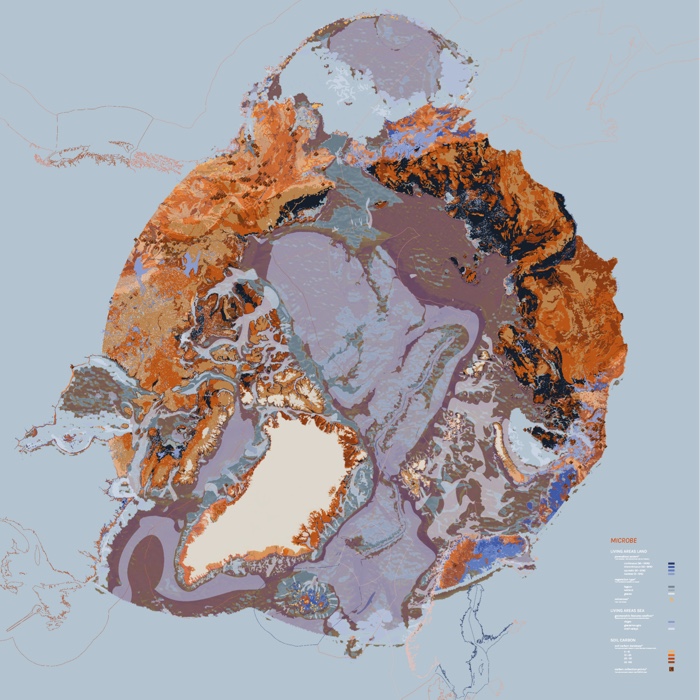
This map contains some excerpts of the research related to the habitat of methanogens such as Methanosarcina Soligelidii or Candidatus Methanoflorens Stordalenmirensis, which are the most abundant species in permafrost soils. Photo: alternaA (Andra Pop-Jurj and Lena Geerts Danau)
The Arctic is heating up three times faster than the global average. Recent data even suggest that the alarming rates of global heating in some regions of the Arctic might be up to seven times faster than the rest of the world.
For some, it’s brilliant news. Tourism agencies are now offering luxury “last chance to see” cruises to witness a disappearing territory. The melting sea ice also opens up new shipping routes and opportunities to extract natural resources, in particular deposits of gas and oil below the seabed. As a result of the rapidly warming landscape, the Arctic has turned into one of the most contested territories on this planet.
However, as Andra Pop-Jurj and Lena Geerts Danau‘s prototype makes clear, questions of sovereignty, national borders and man-made regulations do not mean anything for the non-human life that inhabits the Arctic.
The duo are using a game engine to help us navigate the Artic through the perspective of characters as diverse as a microorganism, a bird, a fish, a caribou or the shrinking ice sheet. Each of these characters occupies a specific territory, moves at a different speed, experiences different timeframes, scales and sensorial realities and encounters different manifestations of human geopolitics.
The Arctic cod, for example, is on a mission to avoid the fishing nets to ensure repopulation. As the sea ice becomes thinner and its edges retreat northward, the increasing sunlight and flow of fresh meltwater offers nutrients to phytoplankton that lie at the base of the Arctic food web and thus boosts Arctic cod populations. The Arctic tern, on the other hand, is looking for fresh fish and breeding spots. While flying over the Arctic, the bird notices more and more machines that scan the territory, building infrastructures on sea and land, creating mess in the process. As for the caribou, its population appears to be in sharp decline across the Tundra. Its mission is to secure lichen and breed in order to sustain its collective migratory behaviour.
This exercise in changing perspectives enables a more nuanced understanding of how our geopolitical, environmental and industrial priorities impact the different agents inhabiting the Arctic landscape.
Monsters and Ghosts of the Far North is a game but it is also an experiment in unlearning, in de-centring the human and in thinking outside of our usual paradigms. While interacting with the game, the player can uncover different layers of data as well as a range of future predictions from CMIP6 environmental models. The game narrative is thus grounded in scientific research emerging from different fields of expertise that usually coexist in isolation. However, the artists chose to interpret that data in order to make it easier for the audience to understand and relate to the challenges, entanglements and dynamics at play in the region.
Monsters and Ghosts of the Far North also aims to challenge the traditional forms of cartography that are not only anthropocentric and colonialist but that also reduce the complexities of a place down to two-dimensional borderlines.
The title of the work is inspired by Anna Tsing’s publication Arts of Living on a Damaged Planet: Ghosts and Monsters of the Anthropocene. Perhaps, the main ghost is the ice that is melting and will most likely be just a souvenir by the year 2100. And perhaps, the monsters are the politico-industrial choices that unleash their violence on the Arctic landscape and beyond.
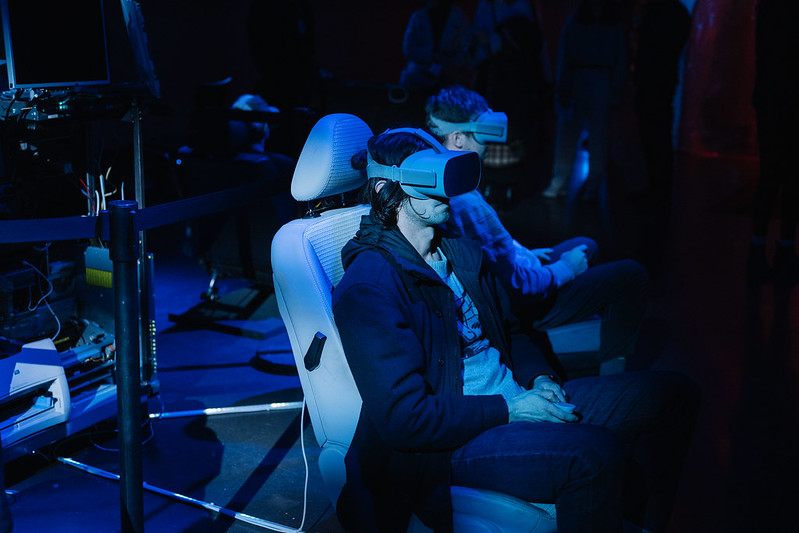
Akwasi Bediako Afrane, TRONS ‘R’ US, 2022. Driving the Human. Photo by Camille Blake
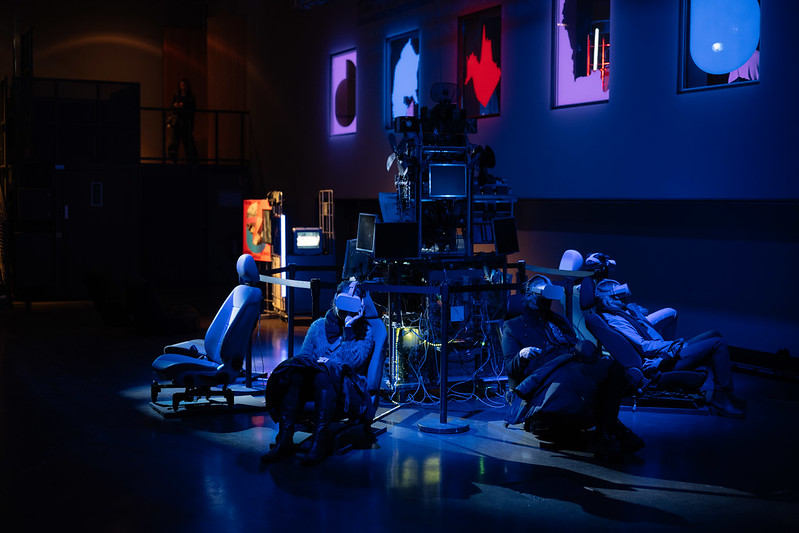
Akwasi Bediako Afrane, TRONS ‘R’ US, 2022. Driving the Human. Photo by Camille Blake
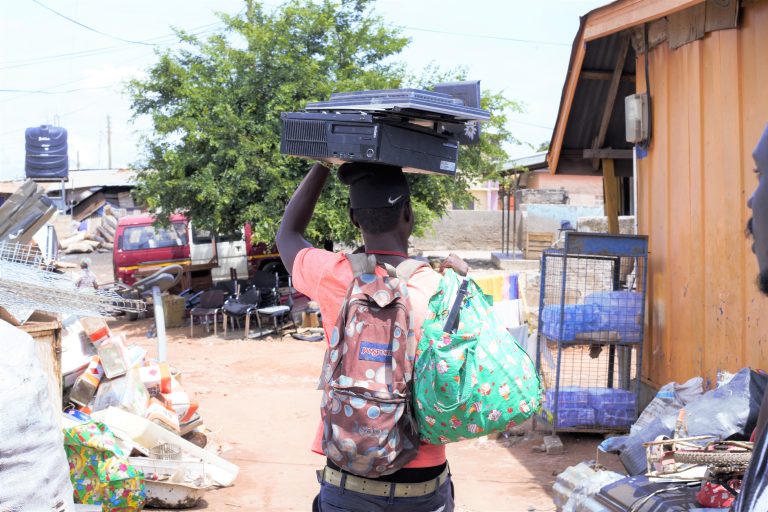
Akwasi Bediako Afrane, TRONS ‘R’ US
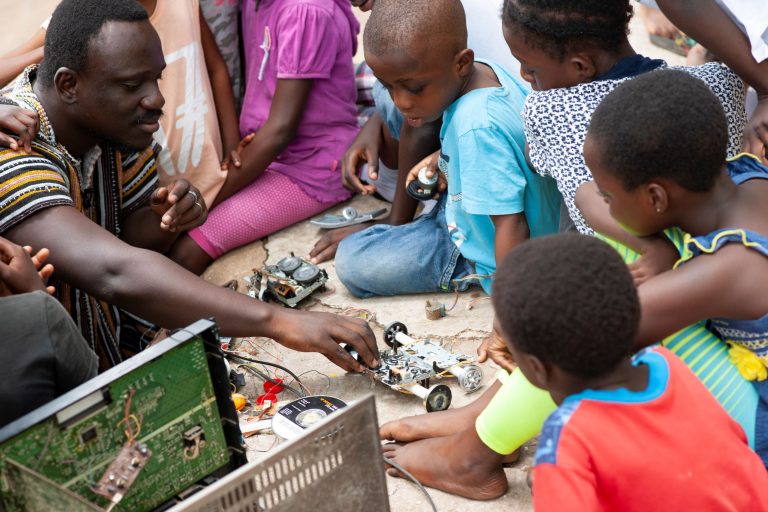
Akwasi Bediako Afrane building a TRON with kids from the “No Limits” foster home in Accra, Ghana
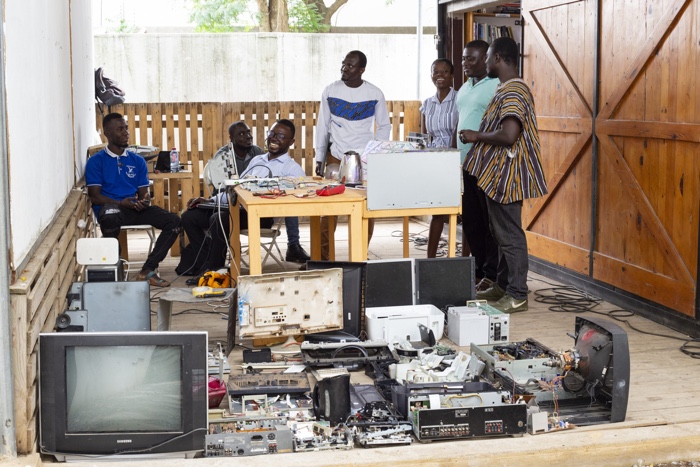
Akwasi Bediako Afrane (on the right) with a few of the workshop participants and their TRON
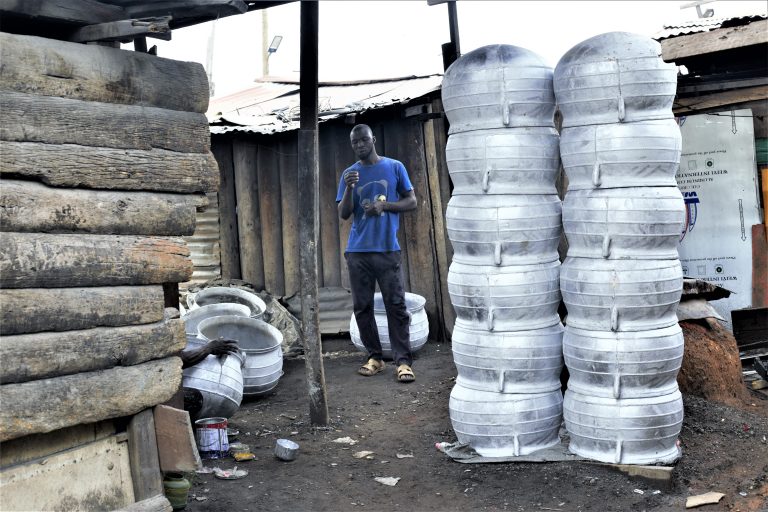
Akwasi Bediako Afrane, TRONS ‘R’ US
With TRONS ‘R’ US, Akwasi Bediako Afrane investigates the confused relationship between humans, technology and the environment.
The project uses discarded electronics hacked and reassembled to present us with a more honest and comprehensive portrayal of the life cycle of electronic objects, making visible the various processes at work behind their afterlife.
Akwasi Bediako Afrane started by identifying the main agents involved in electronics. The first group of tech actors take an active role in the life of electronics. They are the miners, the manufacturers, the distributors and the consumers. Then the second group steps in to ensure that what most of us regard as “e-waste” is given an afterlife. They are the second-hand dealers, the repairers, the scrap dealers and the recyclers.
The artist wanted to include members of these 8 groups in a discussion that explored how they interact with electronics and how responsible they feel towards the environment. Unfortunately, some (the mining companies and the manufacturers in particular) were not particularly keen on the idea.
He then invited repairers, scrap dealers and consumers to workshops (some took place in Ghana, others at ZKM in Germany) where they tore apart disused pieces of electronics, opening up the ‘black box’ of technology. They were also shown how to repurpose the pieces and build their own version of gadgets.
Afrane is also working on a documentary that shows how people in Ghana reappropriate the devices. The country doesn’t produce electronics. However, Ghanaians get access to all the components that Western countries dump on them in the form of e-waste. They use them as raw materials, recycling some of the components to repair electronic goods in the local community, reappropriating the condensers in fridges, melting aluminium to make cooking tools, sourcing aluminium, copper and even sometimes a little bit of gold from old tv sets, etc. In the process, they not only create value from waste but they also develop skills, know-how and an intimate understanding of electronics. Occupying a space between craft and engineering, their practice plays an important role in the circular economy and would deserve more recognition.
The prototype presented in Berlin takes the form of a huge installation made of discarded electronics and VR goggles that have been rewired to work together. Old car seats have been placed around the TRONS ‘R’ US installation. Turned away from it, they symbolise the disconnections between the electronics industry and the users. The use of VR also suggests a technology that literally blindfolds you. However, both the hacking process and the final installation reconnect humans to their machines and make more visible the kind of prosthetic role they play in human existence.
TRONS ‘R’ US is not just an exercise in upcycling, it is a springboard to get people to discuss the life cycle of products and the capitalist-induced technological overproduction. The work asks us to question our drive to constantly “innovate” and “improve”. How much more definition of an image do most of us really need? How much data do we really need to produce and amass, especially when storage has such a heavy carbon footprint? How much do we really (want to) know about the way our gadgets are being mined, manufactured and disposed of? Hacking might not have the answer to all these questions but it is certainly part of a solution to a sustainable future
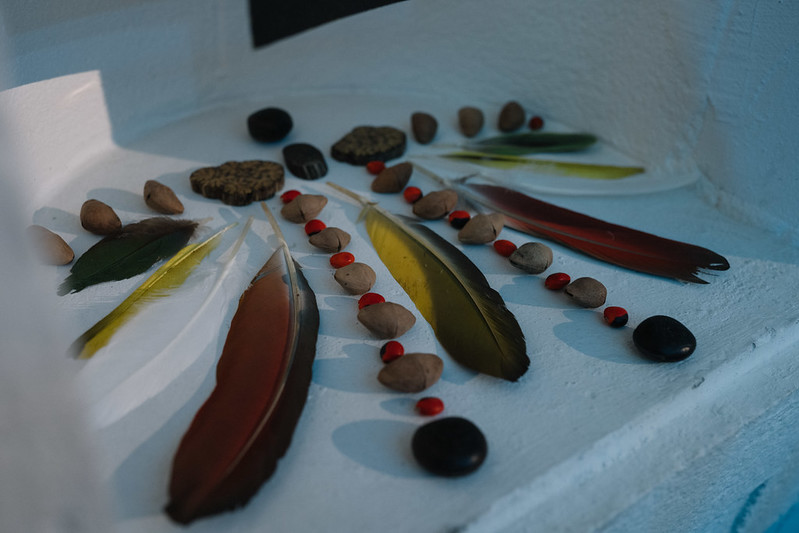
Eliana Otta, Virtual Sanctuary for Fertilizing Mourning, 2022. Driving the Human. Photo by Camille Blake
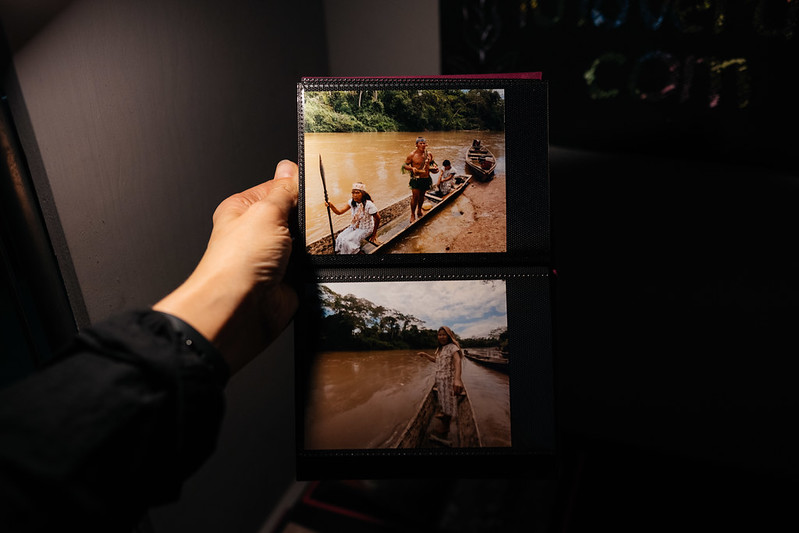
Eliana Otta, Virtual Sanctuary for Fertilizing Mourning, 2022. Driving the Human. Photo by Camille Blake
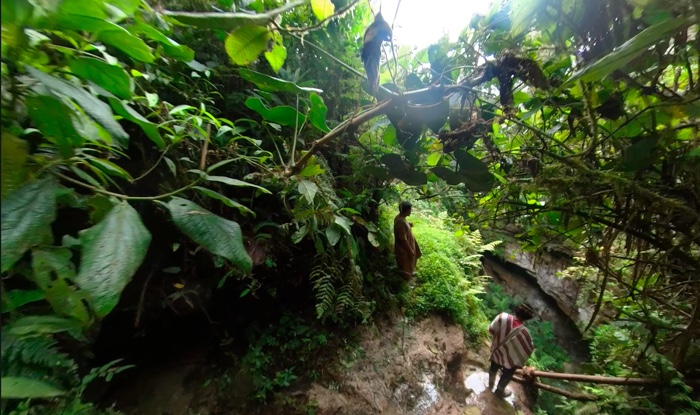
Eliana Otta, Virtual Sanctuary for Fertilizing Mourning (Research trips in Peru)

Eliana Otta, Virtual Sanctuary for Fertilizing Mourning (Cristian Java)
The most moving work for me was Virtual Sanctuary for Fertilizing Mourning because it gives a face, a history and a dignity to the eco-activists who risk their lives in the Peruvian rainforest to preserve biodiversity, wildlife and a certain way to exist within nature. They are at the forefront of a fight that matters immensely to the whole planet. Yet, we know so little about these protectors of the rainforest.
The project commemorates the deaths of indigenous leaders and environmental activists assassinated in recent years in Peru while defending their territories from deforestation, mining and drug trafficking.
Over the course of a year and a half, Eliana Otta worked together with the families and communities of the assassinated eco-activists to create virtual tours of the areas they strove to protect. Oral histories, memories, songs and all the information that the communities found suitable to share, contribute to sharing fragments of the universe they inhabit.
The digital memorial was accompanied in Berlin by objects, seeds, feathers, portraits and stories related to these communities. They reveal an important dimension often left out from the police documents and news stories that reports on these crimes: the leaders killed in unclear circumstances were not just victims, they were also passionate human beings with families, stories and ethics.
The work also reminds us that the killing of indigenous activists is only one latest episodes from a long history of oppression, displacement and other forms of violence that are taking place in the region since the colonisation of the Americas.
More photos and projects from Driving the Human:
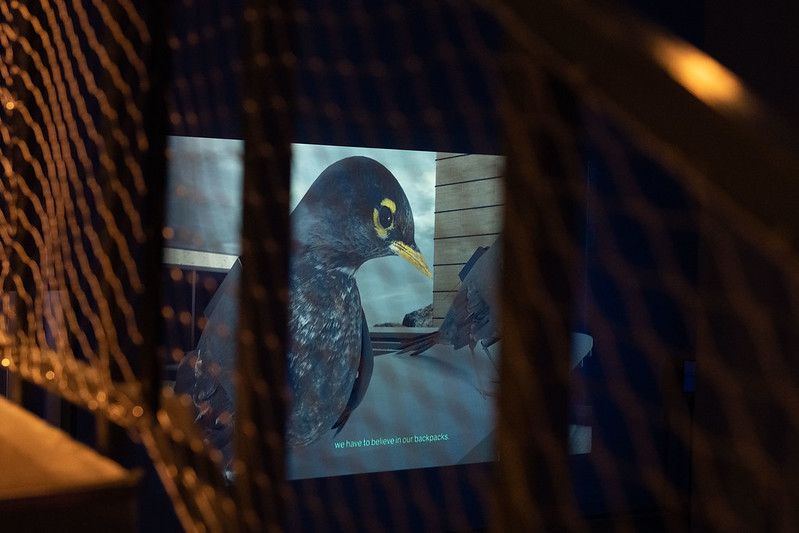
Hyeseon Jeong and Seongmin Yuk, The Backpack of Wings: Modern Mythology, 2022. Driving the Human. Photo by Camille Blake
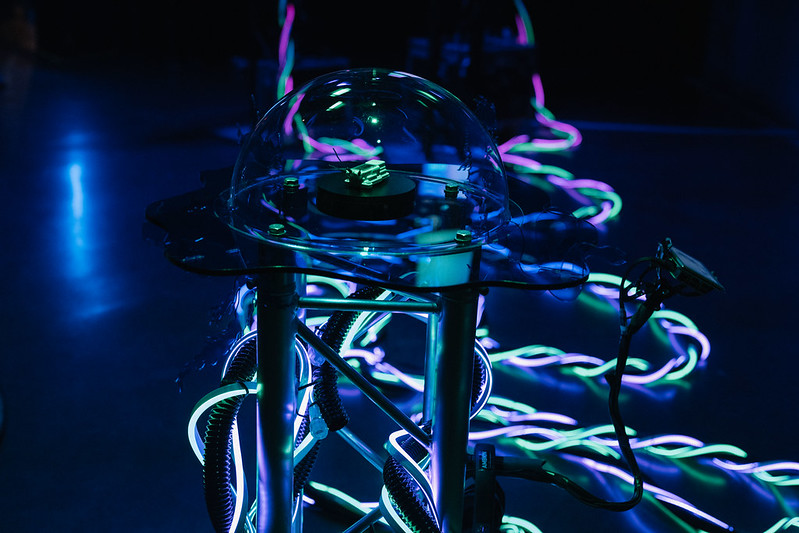
Hyeseon Jeong and Seongmin Yuk, The Backpack of Wings: Modern Mythology, 2022. Driving the Human. Photo by Camille Blake
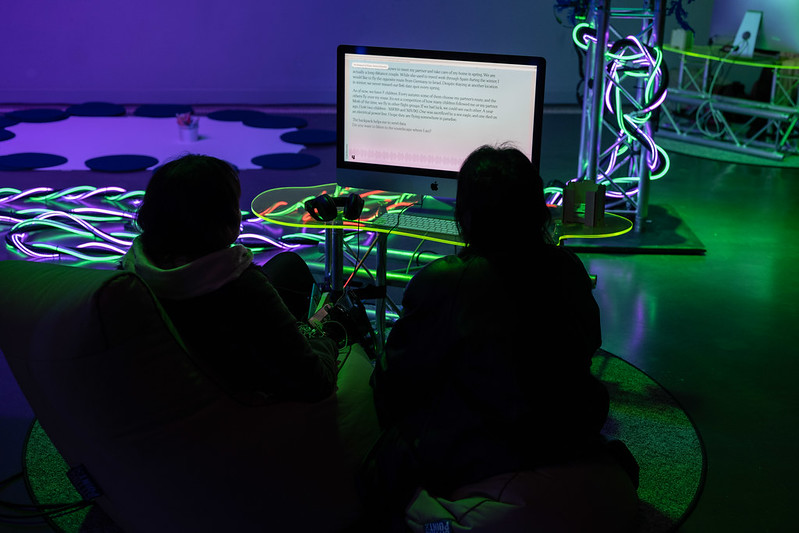
Hyeseon Jeong and Seongmin Yuk, The Backpack of Wings: Modern Mythology, 2022. Driving the Human. Photo by Camille Blake
The Backpack of Wings: Modern Mythology draws from both scientific uses of bio-geo tracking technology for wild animals and the belief that animals “sense” incoming seisms and other natural disasters. As wildlife tracking techniques evolve, animal behaviour data might make it possible to forecast natural catastrophes in the near future. Are we going to develop new appreciation of other animals in the process? Will techniques of forecast based on animal “instinct” give way to new relationships with wildlife?
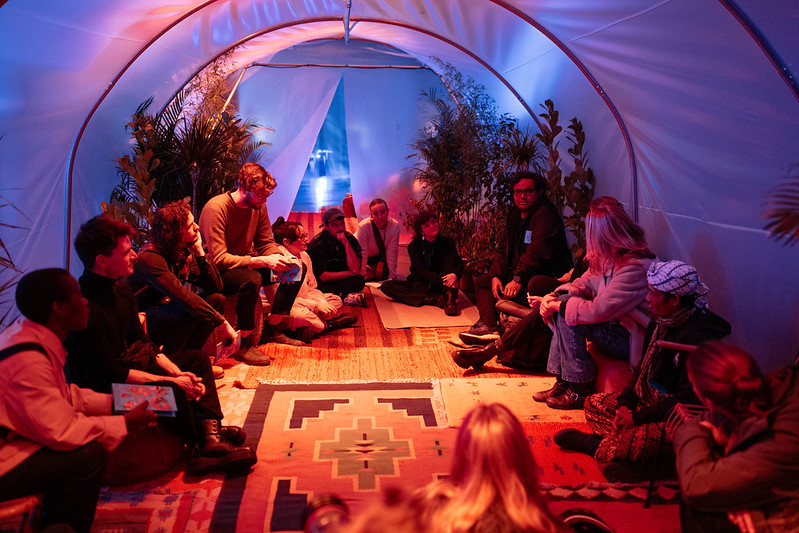
Vincent Rumahloine and Mang Dian, Sedekah Benih, 2022. Driving the Human. Photo by Camille Blake
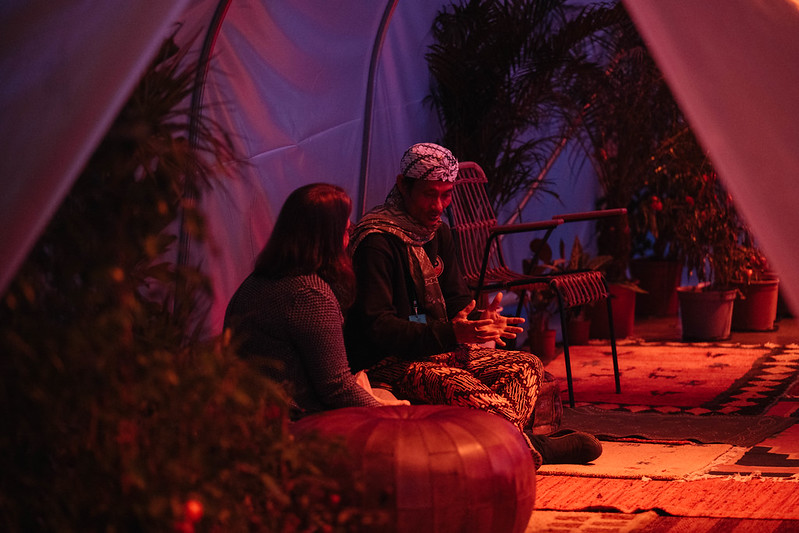
Vincent Rumahloine and Mang Dian, Sedekah Benih, 2022. Driving the Human. Photo by Camille Blake
‘Sedekah’ is a term derived from the Arabic word sadakah, an act of voluntary giving by Muslims without limitations in time or amount. ‘Benih’ means seeds.
Indonesian artist Vincent Rumahloine researches the traditional ecological knowledge that is passed down in society from generation to generation. At the root of the project is the belief that traditional knowledge can be treasured, developed and shared to empower local communities and help solve issues such as lack of resilience, biodiversity crisis and a general disregard for rural expertise. Teaming up with Mang Dian, Rumahloine uses seed sharing as a vehicle to develop a common language between science and society and between communities from different backgrounds and geographical origins.
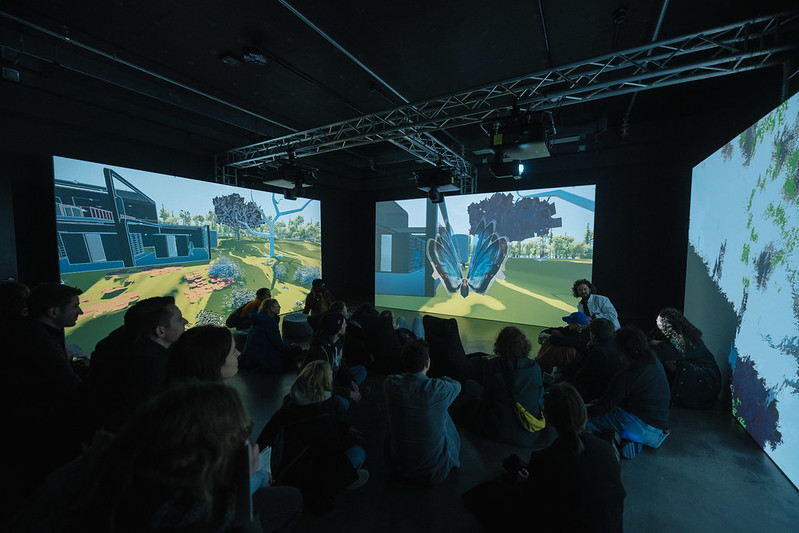
Xiaoyu Iris Qu, Do AIs Dream of Climate Chaos: Symbiotic AI, 2022. Driving the Human. Photo by Camille Blake
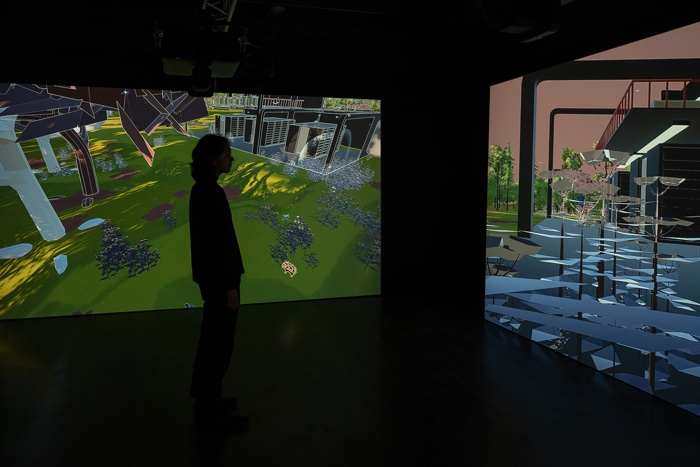
Xiaoyu Iris Qu, Do AIs Dream of Climate Chaos: Symbiotic AI, 2022. Driving the Human. Photo by Camille Blake
Xiaoyu Iris Qu’s prototype, Do AIs Dream of Climate Chaos: Symbiotic AI, imagines a world where machine intelligence interacts not with the intelligence of humans but with the intelligence of butterflies, oak trees, lichen, hedgehogs, etc. The project explores the impact of AI on a local level, the kind of storytelling that emerges from this nature-AI interaction and what other species’ perspectives can add to the human one. An oak tree, for example, has a more long-term perspective than a human.
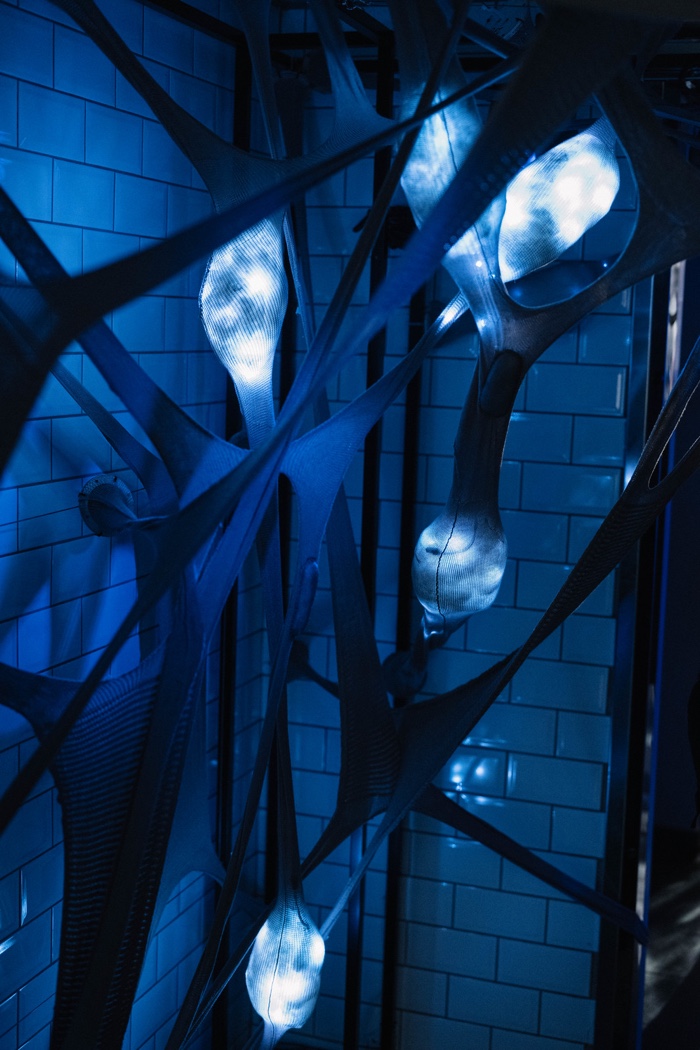
Anne-Sofie Belling, Bea Delgado Corrales, Romy Kaiser and Paula Nerlich, Human-Bacteria Interfaces, 2022. Driving the Human. Photo by Camille Blake
Human-Bacteria Interfaces looks at the possibility of designing microbes to become living sensors that can respond to stimuli based on their genetic design. Ultimately, the work invites us to build more meaningful relationships with microorganisms because of what they already do for us and what they could also do with us.
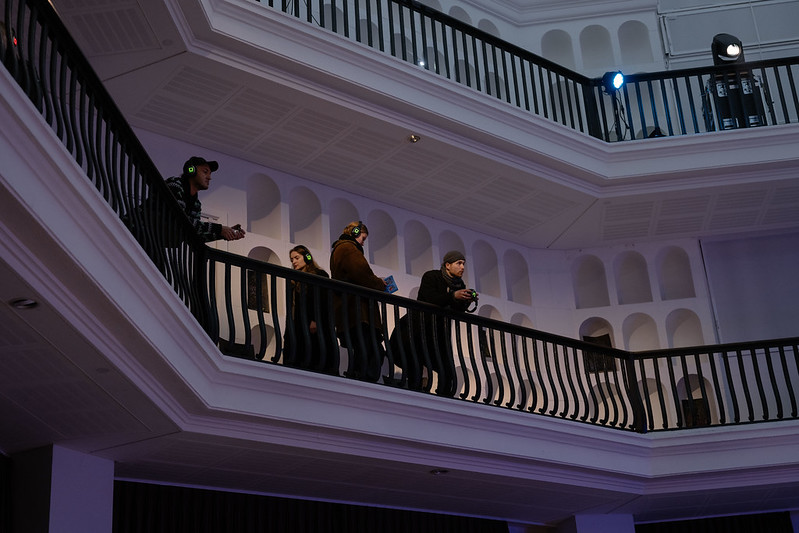
Driving the Human. Photo by Camille Blake
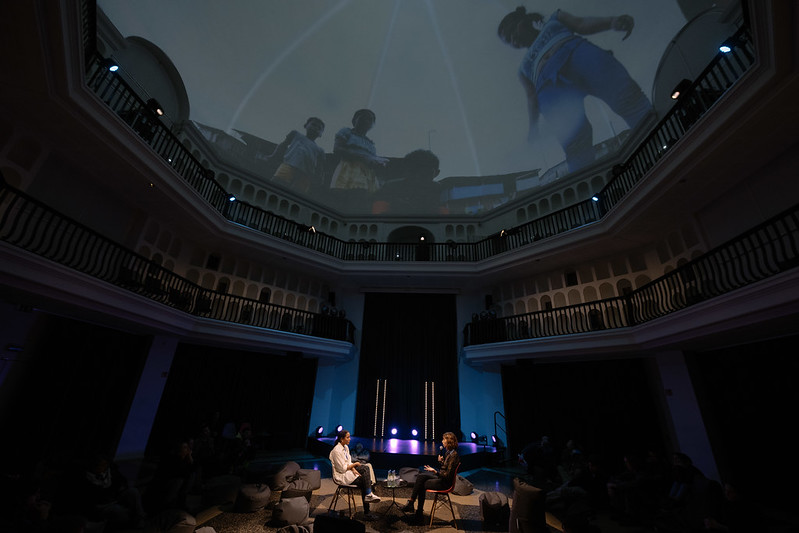
Driving the Human. Photo by Camille Blake
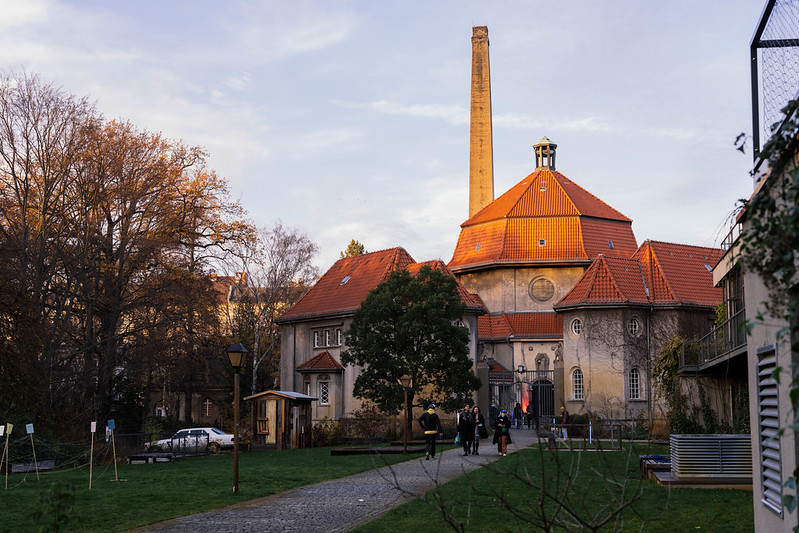
Driving the Human. Photo by Camille Blake
Driving the Human is supported by the German Federal Ministry for the Environment. The cooperation is coordinated by four institutions: acatech – National Academy of Science and Engineering, the international mentoring program Forecast, the Karlsruhe University of Arts and Design and ZKM | Center for Art and Media Karlsruhe. Curator and design critic Vera Sacchetti was the Program Coordinator and Freo Majer, the artistic director.
The next episodes of the Driving the Human adventures include the presentation of the seven prototypes in conjunction with the exhibition Renaissance 3.0 (March 25 – October 8 2023) at ZKM, as well as the launch of the Driving the Human publication with Mousse publishers, in Spring 2023.
